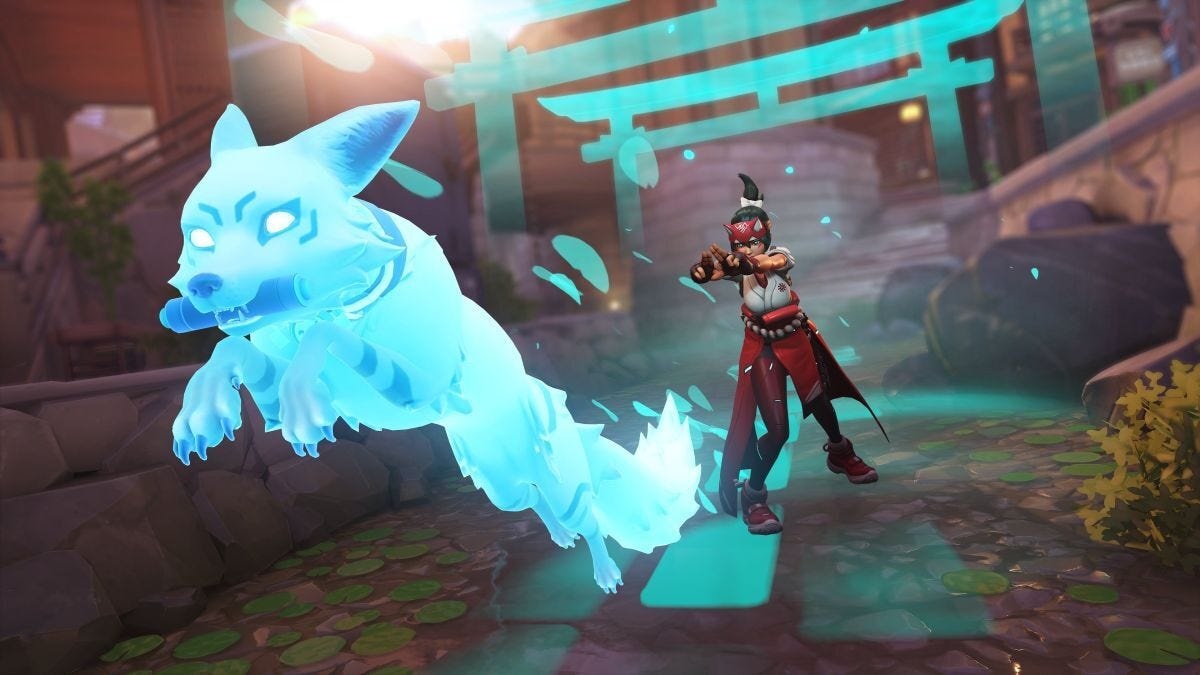
Since Overwatch 2’s controversial launch, Blizzard has made a lot of massive changes to its hero shooter formula. First, it changed the core team makeup from 6v6 to 5v5, then it gutted its promised PvE mode, reworked heroes, added new game modes, and gave every character passive healing abilities. The more these big, sweeping changes pile up, the more it’s become clear that what was once a team-oriented, strategic hero shooter, is inching closer and closer to a deathmatch battle, like nearly every other popular multiplayer shooter. Overwatch 2 seems like it doesn’t want to be the game people fell in love with, and that trend will continue in season 10, which will change multiple game modes to favor speed over all else.
News of this comes from a February 23 Director’s Take post on the official Overwatch website, in which the team talks about changes coming during the current season and the upcoming one that will begin in April. There’s some good stuff here, including the removal of competitive grouping restrictions that made it so that friends who were too far apart in rank couldn’t team up and play the mode together. Overwatch 2’s matchmaker will just be a bit choosier about which groups to pit you against. “Wide groups” that have a more significant range of rankings within their team will only be pitted against other teams with a similar disparity. This is a fair compromise, I’d say, and it will be implemented in season 10.
Where things get dicier is the other changes that will be made to make modes even more fast-paced. The post says these changes came after the experimental “Quick Play: Hacked” mode that ran in January, in which respawn, payload movement, objective capture, and robot pushing speed were increased across the board. The idea was to “explore new and fun ways to change core Quick Play gameplay,” but they were initially framed as a limited-time deal. Now, it sounds like some of these changes will be implemented for real in season 10.
“We’ll be increasing the speed of the Push bot when he’s pushing the barrier,” the blog says. “We’re implementing a speed boost out of spawn for Flashpoint maps, as well as during setup for defenders on Hybrid and Escort modes. We’ll also be reducing the match length of Push from 10 minutes to eight minutes in Quick Play and are discussing whether to do that in Competitive.”
The prevailing ideology seems to be to get players into the action as quickly as possible. But if you couple this with shifts to respawn times, more deadly weapons, bigger hitboxes, and passive healing, it’s clear Overwatch 2 is making changes to keep the momentum going, and to promote a quick, kill-centric playstyle like a common deathmatch shooter. It also makes matches shorter, whether by shaving full minutes off a Push match or speeding up objective capture. You might play more matches in a day, but the tactical substance of those games shifts dramatically when speed becomes a priority.
Overwatch 2 has been gradually making the change from a team-based game to one that feels like it rewards independence, and it’s been getting more apparent in the past few months. The game removed one tank from its setup, deprioritized defense and fighting from a stationary position, and retooled once-defense-oriented characters like Orisa to be more aggressive and disruptive. Giving every character a passive heal that activates when they don’t take damage for a few seconds puts some support heroes in an odd spot because a significant part of their kit has become less essential. Damage has taken priority over everything else, and changes to the game’s pace feel like Overwatch now rewards quick, deadly plays over strategic ones. Luckily, Blizzard can always fine-tune these ideas and maybe find a happy middle ground between deathmatch and strategic play. I just wish Overwatch 2 didn’t feel like it was constantly moving away from what made everyone fall in love with it in the first place: its tactical, hero shooter roots.








